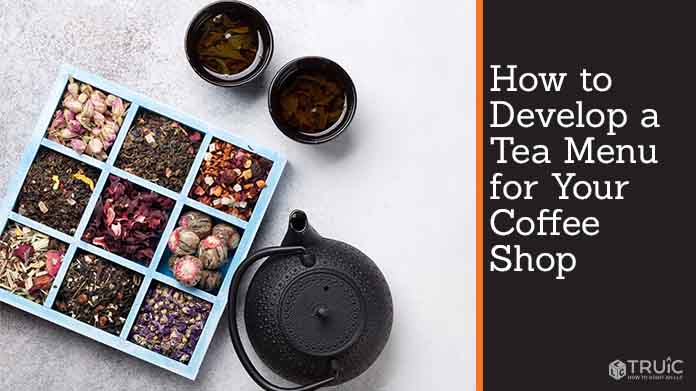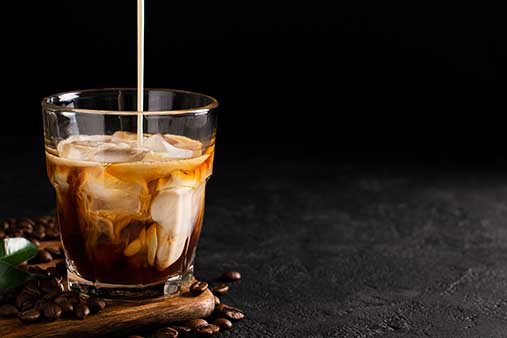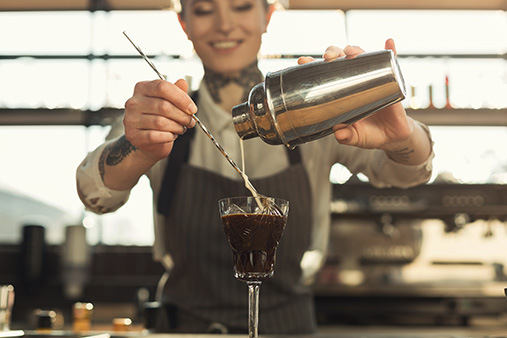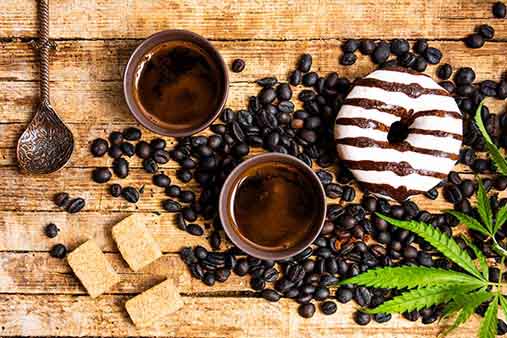How to Develop a Tea Menu for Your Coffee Shop
Serving tea in your coffee shop can help your business attract new customers. However, you will first need to decide which teas you want to offer and how you plan to present them. Follow the five steps in this guide to more easily navigate those decisions.
Recommended: Read our full, in-depth How to Start a Coffee Shop Business guides, inspired by coffee professionals, they will help make your coffee dreams real, from sourcing beans to hiring baristas, choosing the best POS system, forming an actual company, and everything in between.

Why Serve Tea?
Coffee is — without a doubt — the most important product you sell. So why serve tea as well? Here are four good reasons:
- It Can Boost Your Profits. Tea will bring another demographic into your shop, increasing sales and your overall profits. Coffee lovers already visit your establishment so why not give tea drinkers a reason to become regulars as well?
- It Encourages Afternoon Business. Because many teas contain no caffeine or less caffeine than coffee, they give your customers a delicious option to replace coffee in the afternoon.
- It Keeps Your Shop Competitive. Almost every coffee business now serves a few teas as well as tea latte options, such as chai or matcha. If you don’t offer any tea-based beverages, you may encourage some people to take their business elsewhere.
- It Requires Minimal Upfront Costs. It only takes a small investment to start selling tea in your shop. You likely have most of the required equipment already, which means you may just need to buy a few teapots and some tea before adding tea drinks to your menu.
With so many compelling reasons to develop a tea menu for your coffee shop, where should you start?
Steps to Developing a Tea Menu
Step One: Obtain the Right Equipment
You probably have most of the equipment required to serve tea already in your shop — and you can buy the rest from any restaurant supply store. Here’s what you’ll need:
- Hot Water: You can dispense this from your drip coffee maker without sacrificing the vital hot water supply in your espresso machine’s boilers.
- Mugs or Cups: Whether you use a teapot or not, you can use your existing coffee mugs — or cups and saucers — to provide a great presentation.
- Teapots: This depends on your preferred presentation, which this article will address in “Step Five” below.
Step Two: Find a Tea Supplier
Finding the right tea supplier for your business most likely will depend on pricing, variety, and location. This can be as simple as conducting an online search for tea suppliers, selecting one, and reaching out to its sales team. If local products are important to your business, you may want to look for tea suppliers based in your city or state.
Once you identify a few potential suppliers, examine their tea options. Do they have the teas you’d like to serve daily? What about unique teas and tea blends you could serve seasonally? Next, compare each supplier’s prices and order minimums to find the best fit for your shop.
Step Three: Decide Which Tea to Serve
The type of tea that will work best for your business depends on your and your customers’ preferences. As you consider the options, here’s a list of the most popular teas served in coffee shops and why they make great choices:
Black Tea
Black teas come in many varieties. Great for hot tea, tea lattes, and traditional iced tea, these multipurpose tea blends make a great addition to any tea menu and typically become a shop’s biggest sellers. As an added benefit, this caffeinated tea variety enables non-coffee drinkers to participate in your business. Here are a few black tea options you should consider serving:
- English Breakfast, a standard black tea blend, is perfect for serving solo or with the addition of milk and sugar.
- Earl Grey, a black tea flavored with bergamot oil, is a sweet, floral alternative to breakfast blends or other standard black teas. It’s commonly used in tea lattes.
Green Tea
Of all of the tea varieties, green tea has the most caffeine and boasts a large following of dedicated drinkers who believe it provides strong health benefits. Here are two popular options:
- Jasmine, a green tea combined with jasmine leaves, has a fragrant aroma and a sweet, but delicate flavor profile. Jasmine tea can help sweeten typical green tea with floral notes, which can prove helpful for customers who don’t usually drink green tea or don’t enjoy its tartness.
- Gunpowder Green, a classic green tea, takes its name from its smoky flavor as well as producers rolling the tea leaves into a bullet shape. This commonly available option is popular with most green tea drinkers.
Herbal Tea
Herbal teas make popular caffeine-free options — particularly in the afternoon when many customers may want to limit their caffeine intake. Keep one or two in stock at all times along with a rotating seasonal option to feature. These can include single-variety teas or blends. Some good options include:
- Chamomile, a popular herbal tea made from daisy-like flowers, is known for its calming effect and alleged health benefits. Great on its own, chamomile tea also works well as a blended tea with other ingredients like lemon or rose petals.
- Peppermint, a tea made of dried peppermint leaves, represents a particularly popular wintertime option based on a common belief that it offers relief from stomach and digestive issues. It’s another great tea to use as a single variety or in a blend.
- Rooibos, a red herbal tea native to South Africa, provides a sweet, earthy flavor and several antioxidants. Try serving this tea in the fall as a featured hot drink or in the summer as a tasty, iced option.
Step Four: Incorporate Tea-Based Specialty Drinks
These beverages feature teas served as lattes with steamed milk and sweeteners. Specialty drinks made with tea give your menu a creative edge while using many ingredients you already have on hand. Four popular options include:
- Tea Latte: This involves steeping tea in steamed milk with the optional addition of a sweetener. You can use any tea for these drinks and allow your customers to customize their own beverage.
- Matcha Latte: As the Western world continues to embrace this earthy, green, powdered tea, it’s now a staple in all types of cafes from third-wave coffee shops to national chains like Starbucks.
- Chai Latte: This drink blends black tea with spices and steamed milk. It can have either a sweet or spicy flavor. When combined with espresso, it becomes the beverage known as a “dirty” chai.
- London Fog: This specialty drink combines Earl Grey tea, steamed milk, and vanilla. It’s a sweet, delicious tea latte that’s typically popular during the winter months.
Step Five: Choose Your Tea Presentation
As with coffee, presentation matters. Because your cafe delivers an experience as well as a product, you must make some important choices regarding the presentation before placing your first wholesale tea order. These include:
Teapots vs Cups
This will partially depend on your preferred size offerings. If you want to give customers the option of ordering a small tea drink, serving your tea in a cup makes sense. If, however, you want to provide a larger serving option that looks tasteful and allows customers to steep their own tea to their liking, use teapots with a cup and saucer.
Loose-Leaf Tea vs Tea Bags
The offerings of your wholesale tea provider may influence your decision to use either tea bags or loose-leaf tea. In terms of presentation, however, loose-leaf tea provides a more visual experience as customers watch the dried leaves and flowers unfold in their cup. It also eliminates some waste because it comes without the additional packaging of individual tea bags.
Recommended: Explore these different manual brew methods for your cafe.
Conclusion
Adding tea to your coffee shop menu can boost sales by attracting new customers and engaging your existing customers with different, exciting beverages.


